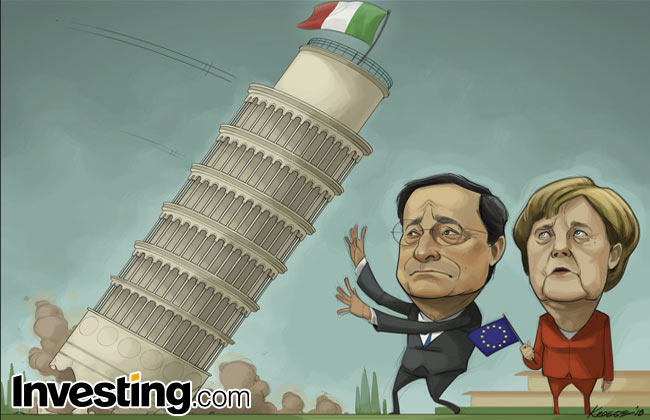Investing.com - Italy's political crisis dominated headlines and market action this week. Stock and bond markets around the globe have been on edge in recent days over concerns surrounding the euro zone's third-largest economy.
Investors have been fretting over the possibility of snap elections, and whether the country's involvement in the European Union and the euro currency will be called into question.
However, news surrounding fresh efforts to form a government have helped alleviate fears over the past day.
Italy on Thursday was awaiting a decision from right-wing leader Matteo Salvini on whether to join a last-ditch attempt to form a government and avoid snap elections that would be focused on membership of the euro zone.
Salvini, the head of the League, has said he would "seriously consider" an offer on Wednesday from 5-Star leader Luigi Di Maio to resurrect their bid to govern together.
The first effort by the two largest anti-establishment forces was torpedoed on Sunday when President Sergio Mattarella rejected their candidate for economy minister - 81-year-old economist Paolo Savona, who has spoken out forcefully against the single currency.
Mattarella then appointed a former International Monetary Fund official, Carlo Cottarelli, to form a stop-gap government of experts to lead the country to snap elections. But Cottarelli has so far failed to form a viable cabinet.
Di Maio, whose 5-Star emerged from the inconclusive March 4 elections as the largest single party, urged Salvini to drop his insistence on Savona for the economy portfolio and agree to give him another post in the next government.
Italian stocks were trading higher for the second day on Thursday, as signs emerged of a compromise to avoid snap elections that could be dominated by the issue of euro membership, calming investors.
Borrowing costs meanwhile edged lower. Italy's 2-year government bond yield, which has been the focus of a recent selloff, fell to as low as 0.816% from a high of 2.7% earlier this week.
Meanwhile, the euro rallied further, hitting a daily high of 1.1724. It surged 1.1% the previous day, its second-biggest daily gain so far this year. The currency had sunk to 1.1510 on Tuesday, its lowest since late July 2017.
The latest developments came amid a general calming of financial markets after Tuesday's rout, when investor concerns prompted the biggest one-day rise since 1992 in Italian two-year bond yields and dented the euro's exchange rate.
To see more of Investing.com’s weekly comics, visit: http://www.investing.com/analysis/comics
